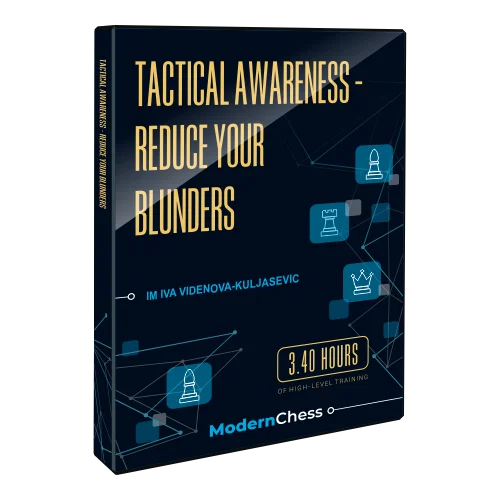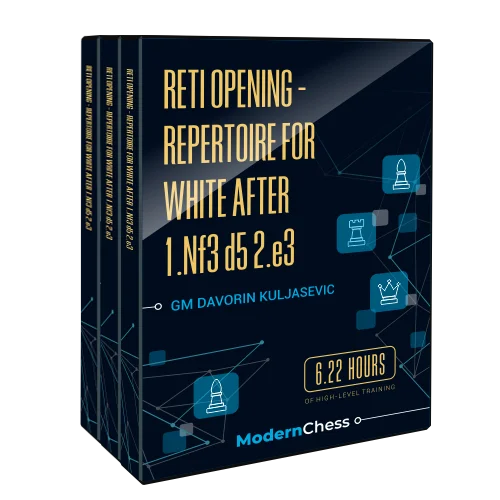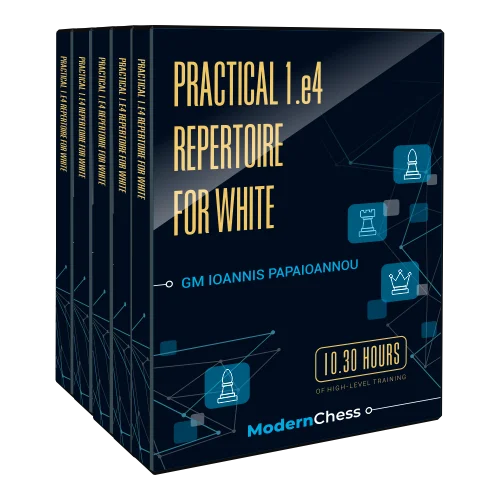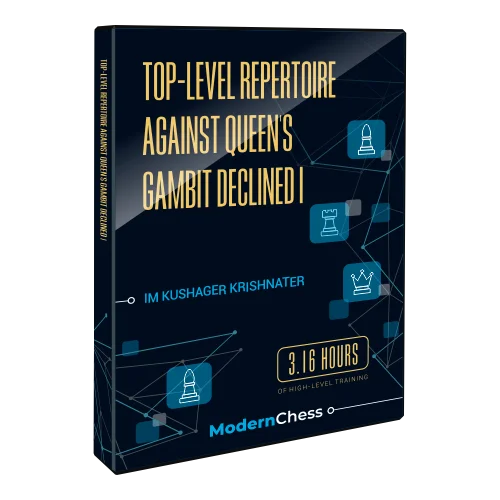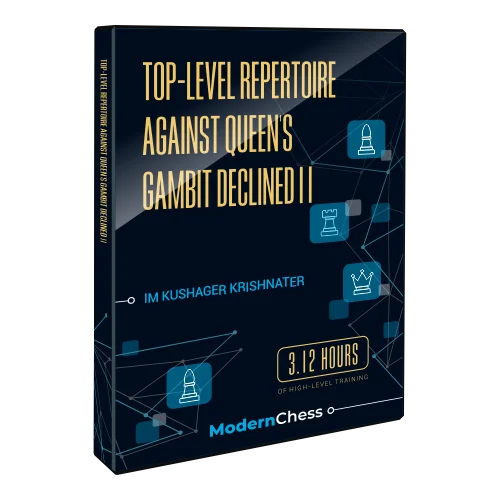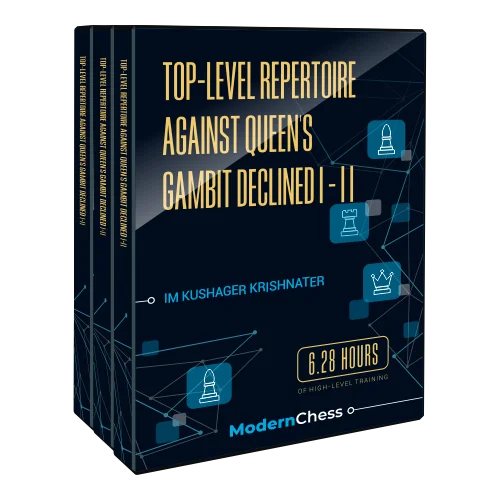We are happy to announce that IM/WGM Iva Videnova-Kuljasevic has come up with her first course for Modern Chess - Tactical Awareness - Reduce Your Blunders. In order to structure your thinking process, Iva Videnova provides you with a system of thinking based on certain patterns.
We are happy to announce that IM/WGM Iva Videnova-Kuljasevic has come up with her first course for Modern Chess – Tactical Awareness – Reduce Your Blunders.
Despite being able to solve complicated chess puzzles, during the game, we often miss relatively simple tactics. The most important reason is that we are not aware that the tactical possibility actually exists. In order to structure your thinking process, Iva Videnova provides you with a system of thinking based on certain patterns.
This course is highly interactive. After explaining the fundamental points of her algorithm, Iva provides you with 100 test positions. To make the most of the learning, you are strongly advised to think on your own before checking the solution. All the 100 test positions are backed up with extensively annotated solutions. Also, in the video lectures, IM Videnova-Kuljasevic goes into greater detail about the decision-making process in each position.
Preview by the Author
Hello, everyone. I’m Women Grandmaster Iva Kuljasevic, and this is my first video course for Modern Chess. The course topic is tactical awareness. I would like to help you develop tools to improve your tactical awareness and ultimately reduce blunders in your games.
Has it happened to you to train hard, solve tactics daily, read instructive chess books, watch chess videos from renowned authors, and do all the right things, and yet, when playing a game, wreck a winning position with one silly blunder? Then you probably know how frustrating and demotivating that is.
In most cases, the root of the problem is the lack of tactical awareness. With this video course, I suggest a system of two triggers that will help you increase your awareness of the opponent’s tactical resources. The triggers are:
1. Unsafe pieces
2. Forcing moves
The unsafe pieces are of two types:
Type 1: Unprotected pieces;
Type 2: Underprotected pieces.
Unprotected are those pieces without a single defender, while under-protected are those with insufficient defenders. For instance, a piece with one defender and one attacker is unsafe, as is a piece with two defenders and two attackers. A piece must be overprotected and have more protectors than attackers to be safe. Accidents in chess rarely happen to well-protected pieces. Usually, they go hand-in-hand with unsafe pieces. Therefore, it’s important to be aware of your own unsafe pieces. They are your liabilities, and this is where your opponent can have tactical opportunities.
Once you detect your own unsafe pieces, you should know that there are three strategies your opponent can apply to them:
Strategy 1: Capture them;
Strategy 2: Attack them once again;
Strategy 3: Remove their defenders.
Imagine you play a game, and you are about to make a move. Scanning the board for unsafe pieces first and checking whether the opponent can apply one of these three strategies is advisable.
The second trigger, forcing moves, is no less important. My definition of forcing moves is the checklist that consists of the following four elements (ordered by their priority):
1. Checks (the priority scale is the following: double checks, checks and captures, single checks);
2. Mating threats;
3. Captures (starting from capturing the most valuable piece);
4. Threats (starting from threatening the most valuable piece).
When calculating the opponent’s resources, it is advisable to start with the most forcing option, double checks, and proceed according to the priority scale. When you come to captures or threats, it is better to calculate capturing/ threatening the most valuable pieces first.
For instance, if the opponent can capture your queen, bishop, and pawn, you’d better examine capturing your queen first.
In summary, forcing moves connected to unsafe pieces can be dangerous. So, be alert to the tactical danger by scanning the board for unsafe pieces and checking the opponent’s forcing moves. This way, the odds of making a significant mistake will decrease. The goal of the course is to help you get better at spotting these two triggers in your games. The best way to achieve that is through practice.
You will have a total of 100 positions (8 instructive exercises and 92 test positions). I advise approaching the test positions by deliberately identifying the unsafe pieces and checking the opponent’s resources by examining their forcing moves. Ultimately, with enough practice, you can develop an intuitive tactical awareness so that you don’t need to go through the checklists deliberately in the future. This way, you will more easily commit these trigger-pushing tools to your memory and, hopefully, implement them in your future games. I hope you enjoy the course and that all the techniques you learn from it will help you reduce blunders in your future games.
Outline:
Introduction
Positions 1-8
Positions 9-13
Positions 14-18
Positions 19-23
Positions 24-28
Positions 29-33
Positions 34-38
Positions 39-43
Positions 44-48
Positions 49-53
Positions 54-58
Positions 59-63
Positions 64-68
Positions 69-73
Positions 74-78
Positions 79-83
Positions 84-90
Positions 91-95
Positions 96-100
About the Author:
IM Iva Videnova-Kuljasevic [FIDE 2325]
is adept at nurturing beginners and students with a FIDE rating below 2000. As a Certified FIDE Trainer (FT) boasting a current FIDE rating of 2322, she brings a wealth of knowledge and expertise to her coaching. Her educational background is solidified with a Bachelor’s degree in chess coaching from the National Sports Academy in Sofia, Bulgaria, ensuring a comprehensive and effective training approach for rising chess enthusiasts.
Key playing milestones include clinching the Tournament of Champions in 2018, being named the best female player at the 2018 Grenke Open, contributing to the 2017 German women’s team championship victory with SK Schwabisch Hall, leading SK Lokomotiv-2000 (Plovdiv) to the Bulgarian team championship in 2017, securing the Bulgarian women’s champion title three times in a row (2014, 2013, 2012), and earning a bronze medal at the European Women’s Team Championship in Porto Carras, Greece, in 2011.
